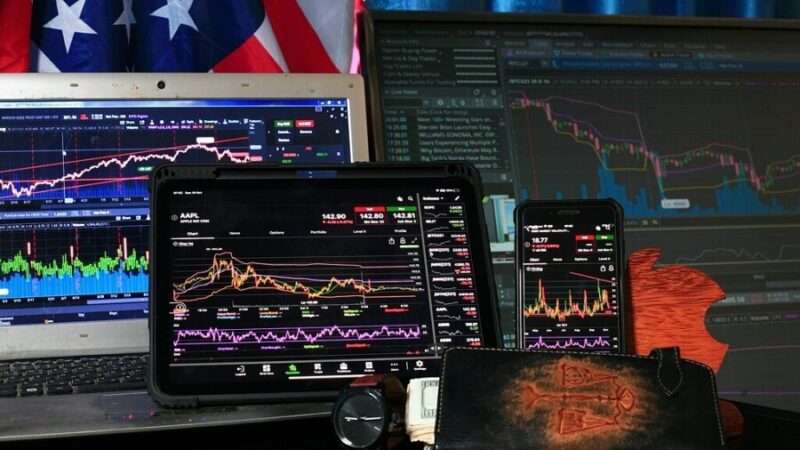A Guide to Getting Started Trading CFDs
CFD trading stands for Contracts for Difference trading. It is a financial derivative product that allows traders to speculate on the price movements of financial instruments, such as stocks, commodities, currencies, indices, and more, without needing to own the underlying asset. In Australia, traders can participate in CFD trading by opening an account with Australian brokers and financial institutions such as certain commercial banks.
The increasing popularity of CFDs
CFD trading has become increasingly popular in Australia among individual and institutional traders due to its flexibility and room for margin trading.
Traders can also participate in a wide range of financial markets and speculate on the price of stocks, commodities, and more, with ease. This makes it exceptionally easy for traders to diversify existing portfolios to reduce their overall trading risk.
On top of that, traders can leverage their capital to potentially earn larger returns when their predictions of market movements are correct. However, traders should also take care and know that leverage goes both ways. This means that if their market predictions are incorrect, they may risk suffering losses that exceed their initial investment. Nevertheless, the use of stop-loss and take-profit orders help greatly to prevent financial catastrophes.
Finally, CFD trading is easily accessible online these days. Many CFD providers work entirely online, and brokers offer trading opportunities no matter where traders are located globally. This greatly lowers the barrier for entry for retail traders.
Trading CFDs: the process
If you are relatively new to trading financial derivatives, CFDs are a great place to start due to their relative simplicity compared to other products of the same variety. Below are some steps you will need to take when you decide to trade CFDs.
Choose a CFD provider
The most important thing is to choose a CFD provider that fits your needs. This can be a broker or a bank, or an alternative type of financial institution. The most important thing is to ensure that they offer the product you would like to trade in the right financial markets, and with reasonable fee structures.
Open an account
Once you have selected your CFD provider, you will need to open an account. Some providers – such as brokers – offer multiple account tiers depending on each trader’s needs. Examples include ‘standard’ accounts, premier and VIP accounts, and even high-frequency trading accounts. These accounts may offer different fee structures, spreads, and use of leverage, and they may have different minimum deposit and trading volume requirements.
Fund your account
Once you have opened and verified your account, you will need to fund your account. Many providers accept a wide range of funding options, ranging from debit and credit cards to electronic transfer methods such as Stripe or PayPal. Double-check the currencies your provider accepts, and make sure you understand the costs involved in trading.
Choose your financial market
Next, you should select the underlying asset you would like to trade with CFDs. You can do this by evaluating financial market performance thoroughly, and deciding if you want to go long or short. If you think the asset will appreciate, you will go long. If you think it will depreciate, you will go short.
Place your order
You can place your order after selecting the size of your position and your use of leverage. You should also take note that CFDs do not have an expiry date. Set any market orders you will need at this stage, including stop-loss and take-profit, as necessary. Once you have done all the above and consolidated your position, you can confirm your trade.
Monitor your trade
With an open position, it is essential that you monitor your trade closely by keeping up to date with the markets. When you are ready to take profit (or limit your losses), you can close your trade. As mentioned, there is no expiry date for CFDs, so you determine when you want to close out your trade – much like you would when you want to close a standard position.
Close your trade
When you want to exit the market, you can close the trade with a CFD going in the opposite direction. You should remember to select the same size of trade in your first contract. You can also close your trades automatically if you have set a stop-loss order to begin with.
Things to consider when trading CFDs
While CFDs are relatively easy to trade, there are a few things that traders should consider when they are purchasing a contract. These include the position size they would like to open, how much leverage they would like to employ, and their overall trading goals. It is crucial to understand what your motivations are when opening a trade, as that can help keep you on track as you monitor the markets.
You should also consider if trading CFDs is right for you at all. Even though it is a great way to potentially leverage your capital and maximise your profits, you may find that you prefer to trade the traditional way – buying and selling assets. You may also find you want to trade other types of financial derivatives, such as options or futures – depending on your trading goals.
Nevertheless, CFDs are a good way for traders to get the hang of speculation of asset prices without owning assets. They can also be a flexible and easy way for traders to diversify their existing portfolios without strenuous effort. Ultimately, only you can decide whether CFD trading is for you, based on your budget and goals.
How you can choose the best CFD broker for you
To choose the best CFD broker for you, you should think about the following:
- Your trading goals
Think about what you want to achieve when trading. Do you want to diversify your portfolio or make a certain amount in profit? Do you want to hone your trading skills in particular markets? Or perhaps you want to make a start in trading derivatives. Regardless of your goals, make sure you understand what your motivations are so you can work to achieve them instead of trade aimlessly.
- Regulations and licenses
The regulatory body for brokers in Australia is the Australian Securities and Investments Commision (ASIC). Brokers should also be a member of the Australian Financial Complaints Authority (AFCA). Ensuring your brokers have the right licensing and follows local regulation is essential for any CFD trader and can offer you a huge peace of mind when trading.
- Product offerings
Consider the underlying assets you can speculate on with your CFD provider before you create an account with them. This is important if you set out to diversify your portfolio.
- Fees and leverage available
Not all CFD providers have the same fee structures and leverage available for traders. Fees may also differ by account tier and type. You should make sure you understand what the spread, overnight charges, and inactivity fees are for the provider you choose. You should also know what the minimum deposit requirements are for each account tier.
- Customer support
Finally, consider the type of customer support you can receive from your CFD provider. It can be as simple as support in your native language, during the hours you are active, and the coverage they provide – can you text and email them, or perhaps even jump on the phone with them? It’s important to have a responsive support team when you are trading with your hard-earned money.
To end things off
CFD trading can be a great way to get into the world of trading financial derivatives. They are easy to access, offer flexible trading options, and are relatively simple in its trading process and execution. Many traders diversify their portfolios with CFDs and leverage their capital successfully. However, the use of leverage also means that traders can lose more than their initial investment if their market predictions are not correct. Therefore, it is vital that traders have a solid understanding of the risks involved in CFD trading before jumping into the market.






